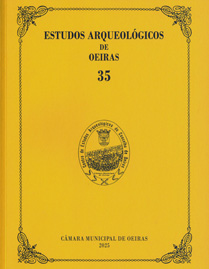Hugo Obermaier, primer catedrático de Prehistoria de la Universidad de Madrid (1922‑1939) y el inicio de la arqueología estratigráfica en España
DOI: 10.5281/zenodo.15005735
Palabras clave:
Hugo Obermaier, El Castillo Cave, stratigraphy, Palaeolithic, Rock Art, Chair of Prehistory, University of Madrid, University of BerlinResumen
Hugo Obermaier was, together with Henri Breuil, the most important Palaeolithic archaeologist in Europe between 1910 and 1939. The excavation of El Castillo Cave (Santander), between 1910 and 1914, with the best stratigraphic sequence for the Upper Palaeolithic in Europe and the writing of Fossil Man, the reference manual on the origin of human being, the phases of the Palaeolithic and Rock Art, published in German, Russian, Spanish and English (1912, 1913, 1916/1925 and 1924), consolidated his position.
After beginning to teach in 1921 at Madrid, he became a Professor of Primitive History of Man at the Faculty of Philosophy and Letters of the Central University of Madrid on March 15, 1922; obtained Spanish nationality on June 13, 1924; was named a member of the Royal Academy on June 12, 1925, and attained the rank of civil servant on January 31, 1928. His adaptation to Spanish life led him to resign from the chair of Prehistory at Berlin in 1932 and 1936, which remained vacant pending a change in his opinion.
Until 1925 his main scientific effort was the preparation of a second revised edition of Fossil Man for its English (1924) and Spanish (1925) editions. In 1924 and 1925 he attempted to resume the excavation of an important cave in Altamira, but he did not have a comparable stratigraphy and, with the effort, at the age of 48, he fell ill for a few months.
In the second half of the 1920s and the first half of the 1930s, in addition to teaching, the direction of the monthly magazine Investigación y Progreso – Research and Progress – (1927‑36) occupied a good part of his time, while he was preparing a third, expanded edition, of Fossil Man.
By reducing his field work, Obermaier’s research was concentrated on North Africa, both in the Paleolithic, in particular the Capsian, and in the Rock Art of Spanish Morocco and French Algeria together with L. Frobenius, and the Rock Art of South Africa whose roots he believed to come from the Capsian, with H. Kuhn. He works also with the publication of a new monograph of the excavations in the Altamira Cave with Breuil, to which they incorporated the new drawings of the 1932 campaign. After the discovery by Porcar in 1934 of an important group of paintings of Levantine Art such as Cueva Remigia and Les Dogues, at the age of 58, he returned to field work together with Breuil.
His main disciples, whose theses he directed or were his assistants, were José Pérez de Barradas, Julio Martínez Santa-Olalla, Martín Almagro Basch, Francisco Esteve Gálvez and Domingo Fletcher Valls.
Descargas
Publicado
Cómo citar
Número
Sección
Licencia
Os artigos publicados são da exclusiva responsabilidade dos Autores.
É expressamente proibida a reprodução de quaisquer imagens sobre as quais
existam direitos de autor sem o prévio consentimento dos signatários dos artigos
respectivos.




